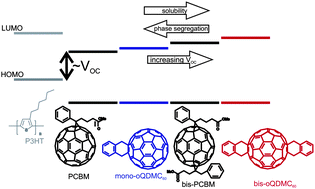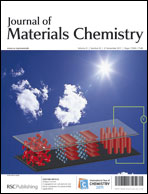We report the application of novel mono- and bis-o-quino-dimethane C60 (oQDMC60) adducts in bulk heterojunction photovoltaic devices. When blended with poly(3-hexylthiophene), the fullerene adducts presented here have an enhanced open-circuit voltage of 640 mV and 820 mV, while preserving high short-circuit current and fill factor, resulting in efficiencies of 4.1% and 5.2%, respectively. Detailed assessment of material properties relevant to photovoltaic devices such as energy levels, charge carrier mobility, absorption and solubility further complements the evaluation. Increased fullerene solubility hindering phase segregation in blends with bis-oQDMC60 has been circumvented by an in-depth morphology optimization assisted by absorption spectroscopy, X-ray reflectivity and atomic force microscopy. This optimized preparation could also serve as a guide for implementation of similar fullerene derivatives. Furthermore, we compare bis-oQDMC60 to previously reported fullerene bis-adducts to provide insight into this emerging class of materials.

You have access to this article
 Please wait while we load your content...
Something went wrong. Try again?
Please wait while we load your content...
Something went wrong. Try again?


 Please wait while we load your content...
Please wait while we load your content...